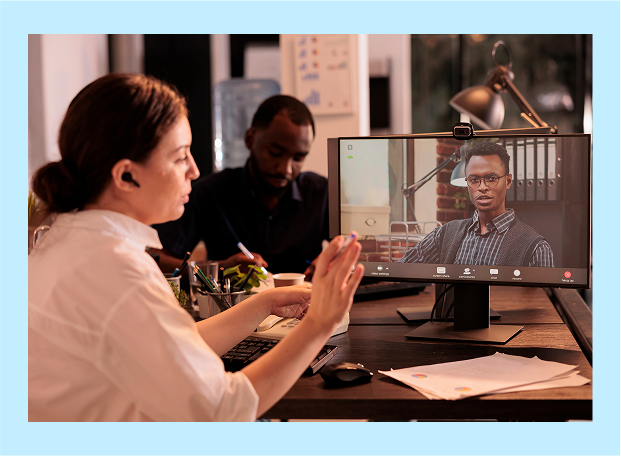In 2025, navigating the nuances of global communication, especially when your target is the sophisticated Japanese market, requires more than just linguistic conversion. Content needs to be accurately and effectively translated into Japanese to resonate culturally and convey your intended message with precision. The complexities of the language, coupled with evolving technological landscapes, present unique challenges and opportunities for businesses and individuals alike.
Mastering the process of getting content translated into Japanese in the coming year means understanding the synergy between cutting-edge technology and the irreplaceable value of human expertise. Tools that streamline workflows while maintaining quality are paramount. This is where platforms like Doctranslate.io become essential, offering solutions designed to bridge the gap between raw translation and polished, localized content.
The Challenges of Translating to Japanese
Translating content into Japanese is notably complex compared to many other languages. Beyond the obvious differences in script (Hiragana, Katakana, Kanji) and grammar, Japanese features intricate politeness levels (keigo), cultural nuances embedded in phrasing, and a vast array of specific terminology depending on the domain.
A significant challenge lies in ensuring accuracy, particularly with technical or industry-specific terms. As highlighted by AI翻訳のデメリットとは? 導入前に知っておくべき限界と課題 – TMJ JAPAN, one major drawback of relying solely on AI translation is its difficulty in accurately handling specialized vocabulary. This can lead to critical errors in fields like medical, legal, or technical documentation, where precise terminology is non-negotiable. While AI appears cost-effective upfront, the necessary human review and correction can introduce unexpected costs and delays.
Furthermore, simply translating words isn’t enough. Effective communication requires localization—adapting content to fit the cultural context and expectations of the Japanese audience. Ignoring this step can lead to awkward phrasing, unintentional offense, or simply failing to connect with the target reader.
Embracing the Hybrid Solution: Technology and Human Expertise
The key to mastering translation into Japanese in 2025 lies in a strategic blend of advanced technology and skilled human oversight. Machine Translation (MT), particularly Neural Machine Translation (NMT), has made remarkable strides in producing fluent and contextually aware initial translations.
According to 2025年に注目すべきローカライゼーションのトレンド5選 | TransPerfect, the increasing use of AI in localization is a key trend for 2025, boosting efficiency and accuracy through NMT and Natural Language Processing (NLP). However, the same source wisely notes that human oversight remains crucial for ensuring cultural relevance and maintaining accuracy, a point echoed across the industry.
This underscores the importance of the Machine Translation Post-Editing (MTPE) workflow. An initial machine-translated draft provides speed and efficiency, while human post-editors refine it for accuracy, nuance, cultural appropriateness, and correct terminology. This hybrid approach leverages the strengths of both—the speed and scalability of AI with the critical thinking and cultural understanding of human linguists.
Doctranslate.io is built to facilitate this modern approach, offering advanced document translation capabilities. It allows users to quickly translate documents, providing a strong foundation that can then be utilized depending on the required level of polish and accuracy, fitting seamlessly into a hybrid workflow.
Implementing Your Japanese Translation Strategy in 2025
For anyone needing content accurate and impactful translated into Japanese next year, implementing a clear strategy is vital. Here are actionable steps:
- Assess Your Needs: Determine the type of content (marketing, technical, legal, etc.) and the required quality level. A low-stakes internal memo needs less post-editing than a critical legal contract or a major marketing campaign.
- Prepare Source Content: Ensure your original text is clear, concise, and free of ambiguity. Consistent terminology in the source makes translation, especially MT, much more effective.
- Choose the Right Tools: Select platforms that support efficient workflows and offer quality options. Doctranslate.io, for instance, focuses on document translation, a common requirement for businesses, making the initial step of getting text translated into Japanese from various file types straightforward.
- Plan for Post-Editing or Review: For content where absolute accuracy and cultural resonance are paramount (e.g., customer-facing materials, legal documents), incorporate a human post-editing or review phase. While AI is powerful, human expertise catches nuances, cultural faux pas, and ensures domain-specific accuracy, as the 通訳の需要は今後どうなる?通訳業界の動向と需要が高まる理由を解説 – OCiETe通訳 article implies regarding the irreplaceable nature of human understanding in critical communication scenarios. The 2022年度 翻訳通訳白書 -第7回翻訳・通訳業界調査報告書- | 一般社団法人日本翻訳連盟 also points to the increasing commercialization of post-editing within the Japanese industry, highlighting its growing acceptance and necessity.
- Focus on Localization, Not Just Translation: Go beyond linguistic accuracy. Adapt images, formats, references, and overall tone to resonate with the Japanese audience.
Leveraging technology for the initial translation allows for significant time and cost savings, freeing up human experts to focus on the critical refinement steps that ensure high quality and cultural appropriateness for content translated into Japanese.
Conclusion
Mastering the process of getting content translated into Japanese in 2025 means embracing the evolution of language technology while recognizing the enduring importance of human linguistic and cultural expertise. The most effective approach is a hybrid one, where powerful AI provides speed and efficiency, and skilled human reviewers ensure accuracy, nuance, and cultural resonance.
As the Japanese market continues to be a key player on the global stage, accurate and effective communication will only grow in importance. Evaluating your current translation workflows and exploring advanced platforms that facilitate this hybrid model is a crucial next step. For streamlined document translation as part of your strategy to effectively reach the Japanese audience, consider how a tool like Doctranslate.io can provide the necessary technological foundation.


Để lại bình luận